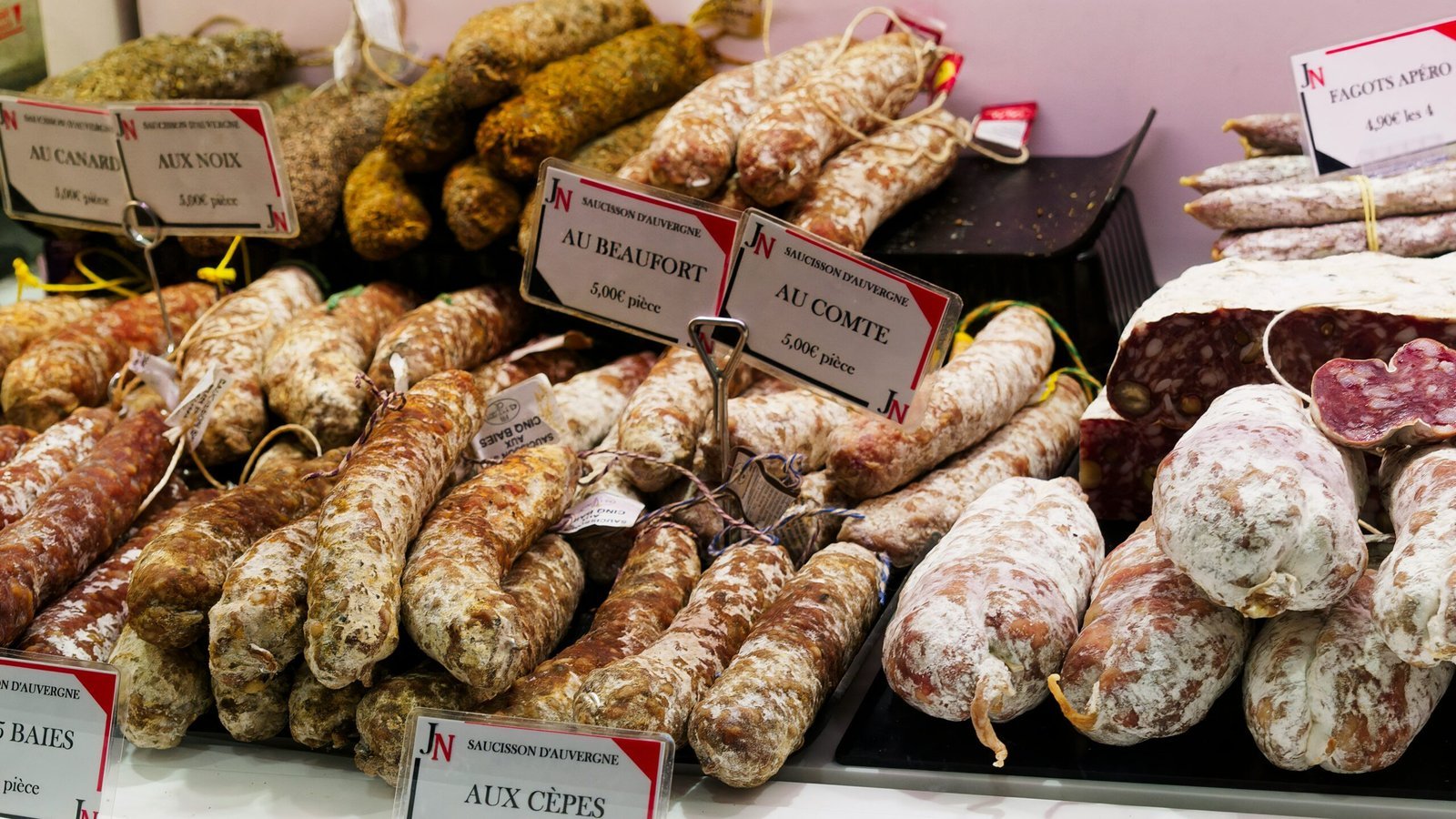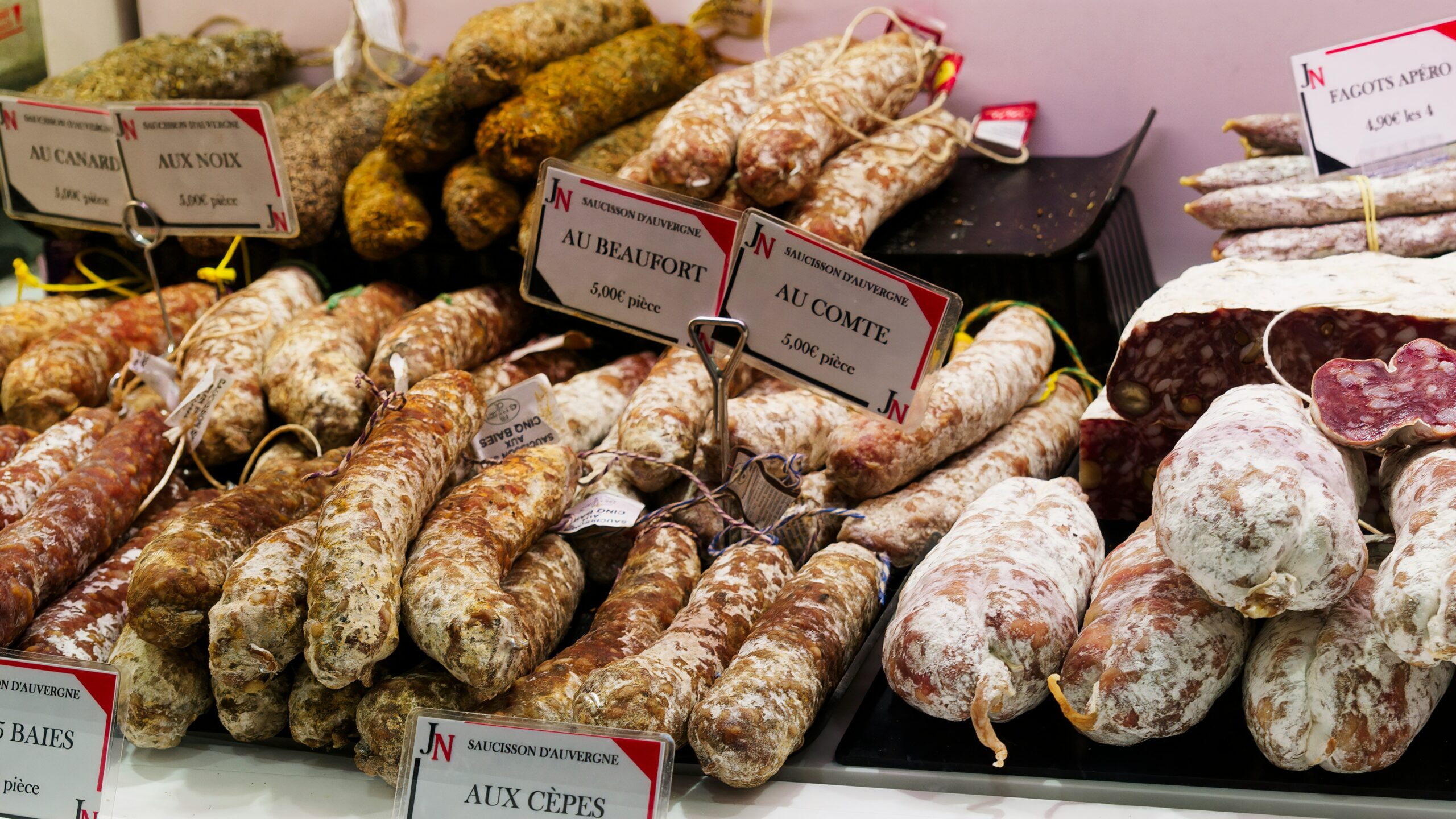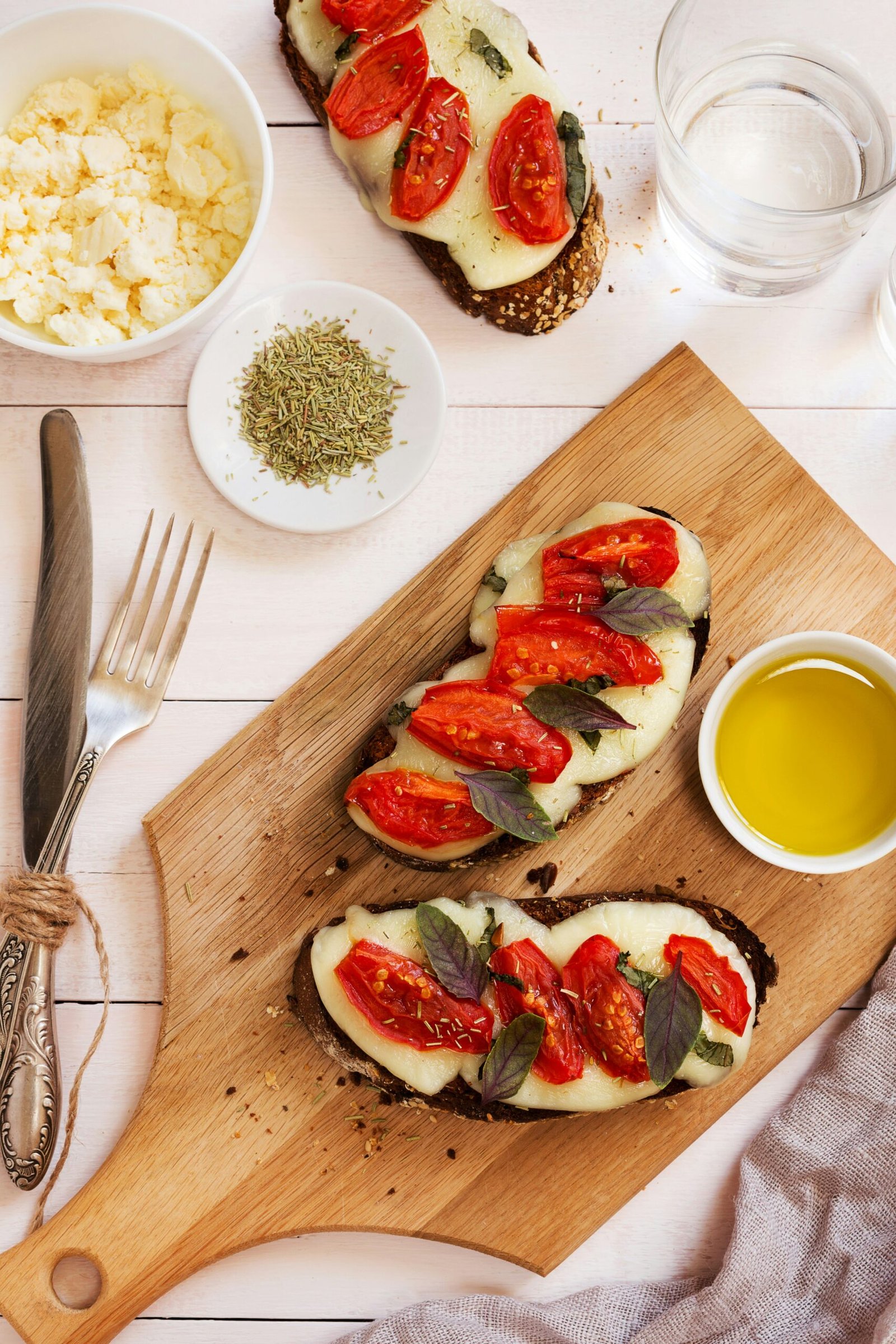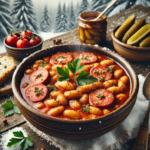Traditional Pork Recipes for Everyone’s Taste
Introduction to the World of Pork
Pork is one of the most beloved ingredients in Romanian cuisine, appreciated not only for its savory taste but also for its versatility in preparation. It plays a central role in various traditional recipes that are often passed down from generation to generation. Over time, pork has become a symbol of hospitality and gastronomic richness in different regions of the country.
In Romania, the use of pork is deeply rooted in local culinary traditions. Many traditional dishes, such as sarmale (cabbage rolls), sausages, or pork roast, are staples at festive meals, underscoring their importance in gastronomic culture. Each geographic area has its own recipes and methods of preparation, resulting in incredible variety. In the mountainous regions, for example, special emphasis is placed on preservation methods like smoking, which contribute to a distinctive, deep flavor.
Beyond its popularity, pork also carries cultural significance. In social interactions, meals enriched with pork dishes symbolize community and unity. Pork is also associated with rituals and traditions specific to various holidays, such as Christmas or Easter. The evolution of pork-based recipes reflects the changes in Romanian society, blending modern influences with traditional methods—making this ingredient not just a food, but a bridge between the past and the present.

Pork in Romanian Traditions
Pork plays an essential role in Romanian traditions and customs, serving as a primary source of protein and a symbol of abundance in the household. Winter holidays, particularly Christmas, are closely linked with the ritual of slaughtering the pig—a practice deeply rooted in rural culture. This tradition is not just about obtaining meat; it also involves a series of rituals that mark the event and promote family and community unity.
When the pig is slaughtered, the family gathers to participate in the ritual, which symbolizes gratitude for nature’s bounty. The process of processing the meat is equally important, resulting in a variety of traditional dishes such as sausages, sarmale, and various cured meats. These recipes, carefully preserved and passed down through generations, often include family secrets that give them a unique character.
Cooking pork during the holidays is an art learned from a young age. For example, pork sarmale, prepared with a rich filling, are a staple on festive Romanian tables. The reddish hue of pork is seen as a sign of prosperity, and its consumption is often accompanied by traditions of joy and hospitality. These cultural practices emphasize not only the importance of pork in Romanian cuisine but also the family and community values underlying these customs.
Sarmale
Sarmale are a traditional Romanian dish, representing a symbol of hospitality and family celebrations. The main ingredients include pork, rice, onions, and a variety of spices. Typically, the pork is minced and mixed with rice and sautéed onions, and the mixture is then wrapped in pickled cabbage leaves. To prepare sarmale, begin by sautéing the onions in a pan, then add the rice, which will swell during cooking. It is essential that the filling is well-seasoned with salt, pepper, and other preferred spices.
Polenta with Pork
Polenta with pork is another popular dish that blends tradition with flavor. Polenta is made from cornmeal boiled in salted water, while the pork component is prepared by frying pieces of pork in oil or lard. To make the polenta, gradually add the cornmeal to boiling water while stirring constantly to avoid lumps. As the polenta thickens, cheese or sour cream can be added for extra flavor. The pork is combined with onions and spices to create a hearty and aromatic dish.
Pork Stew
Pork stew is yet another excellent example of traditional food, popular in various regions of Romania. This dish is made by slowly cooking pork, often along with vegetables such as carrots, peppers, and tomatoes. It is recommended to use pork with a higher fat content for a juicier stew. Start by sautéing the onions and garlic, then add the cubed pork. Once the meat is browned, add the vegetables and spices, allowing the stew to simmer over low heat. This recipe can vary slightly depending on the region, but its essence remains the same: a combination of fresh flavors and ingredients.
The Most Savory Pork Dishes
Pork is celebrated in many cultures for its versatility and flavor. Among the most renowned dishes are oven-roasted pork, smoked ribs, and pork knuckle—each with its own distinct characteristics. Oven-roasted pork is a favorite in many households, prepared with aromatic seasonings that intensify the meat’s flavor. The pork is typically seasoned with salt, pepper, garlic, and various herbs, then cooked at moderate temperatures to develop a crispy crust while keeping the interior juicy.
Another delicacy, smoked ribs, is prepared by processing the meat with wood smoke—a technique that enriches the flavor. This dish can be enjoyed on its own or incorporated into stews and bean or cabbage dishes, where the flavors blend perfectly. Ensuring proper marination before smoking contributes to exceptionally flavorful ribs. Pork knuckle, on the other hand, is a popular dish usually cooked by boiling or roasting. This method allows the fat to slowly melt, resulting in tender, flavor-packed meat.
The choice of side dishes is important to complement these pork recipes. Classic options like mashed potatoes or sauerkraut provide a balance of textures and flavors. Sauces, such as apple or mustard-based sauces, add an interesting contrast that highlights the rich taste of the pork. These combinations not only enhance the culinary experience but also transform everyday meals into special occasions.
Pork in International Cuisine
Pork is part of a multitude of culinary traditions worldwide, serving as a versatile ingredient appreciated in many cultures. From renowned European dishes to specific Asian recipes, pork is used in various ways, with each region boasting its own characteristic recipes. In Romania, dishes like sarmale or pork sausages are staples on traditional tables. These recipes reflect not only local traditions but also external cultural influences.
In the United States, for example, pork is often prepared using slow-cooking methods such as barbecue, where the meat is cooked over low heat for extended periods, resulting in richly flavored dishes. The American culinary experience with pork focuses on grilled meats, ribs, and pork sandwiches, often featuring a distinctive smoky flavor adapted to local tastes. This approach differs significantly from European methods, where oven-cooked pork dishes are more common.
In Asia, pork is an essential ingredient in many cuisines, from Chinese char siu—a sweet and savory grilled pork dish—to rich Thai curries that feature pork. Compared to Romanian recipes, these dishes often incorporate a blend of spices and cooking techniques that emphasize a wide range of tastes, covering both sweet and spicy elements.
In short, pork remains a fundamental part of international cuisine, offering a variety of recipes that not only present distinct flavors but also reflect intercultural influences. From Romanian sarmale to American barbecue and Asian pork dishes, pork exemplifies how common ingredients can be reinterpreted through different cultural lenses, providing a rich and varied culinary experience.
Methods of Preserving and Curing Pork
Preserving and curing pork are essential aspects of ensuring its quality and flavor. Several traditional methods can be used, each with its own advantages. One of the best-known techniques is brining, which involves immersing the meat in a salt solution. This process not only extends the meat’s shelf life but also imparts a distinct taste. It is important to follow the proper salt ratios to avoid damaging the meat.
Smoking is another popular preservation method frequently used in traditional households. This technique not only prevents bacterial growth but also adds a unique flavor. The process can range from cold smoking, which takes a long time, to hot smoking, which is quicker. In addition to flavor, smoking increases the meat’s resistance to external factors.
Confit, a less common technique, involves cooking the meat in fat at a low temperature, followed by storing it in the same fat. This method not only guarantees long-term preservation but also helps maintain the texture and juiciness of the pork. Regardless of the chosen method, it is essential to adhere to food safety standards to prevent contamination. Checking storage temperatures and using airtight containers are just a few measures to ensure the meat’s quality is preserved.
Quick Pork Recipes for Busy Days
On busy days, when time is limited, quick pork recipes become an excellent choice for preparing tasty meals without compromising ingredient quality. These recipes are not only efficient but also extremely versatile, easily adapting to individual preferences.
One example of a quick recipe is pan-fried pork. Simply cut the pork into cubes and season according to your taste. Sauté the pork in a little oil until it becomes browned, and then add vegetables like peppers or zucchini to create a complete dish. This recipe takes no more than 30 minutes, making it ideal for a fast dinner.
Another easy dish is pork meatballs. The main ingredients are ground pork, onions, eggs, and breadcrumbs. Mix the ingredients, shape the meatballs, and fry them in a pan. Meatballs can be served with mashed potatoes or a salad, creating a satisfying lunch. This dish can be made in advance and frozen, adding to its convenience.
A pork salad is also an excellent option for a quick lunch. Sliced pork can be combined with fresh vegetables, feta cheese, and an olive oil-based dressing. It is a hearty, healthy meal that requires minimal preparation.
In conclusion, quick pork recipes are excellent solutions for everyday meals, offering not only speed but also taste and essential nutrients. By incorporating these dishes into your daily routine, you can save precious time without sacrificing the quality of your meals.
Choosing Quality Pork
Selecting high-quality pork is essential for obtaining delicious and healthy culinary preparations. Before purchasing pork, it is important to learn about its origin and choose local products from trusted farms that adhere to animal health and food hygiene standards. This not only supports local agriculture but also ensures fresher and tastier meat.
Identifying fresh pork is another crucial aspect. When buying pork, look for a pale pink color that is neither too dark nor too light. The meat should have a firm texture to the touch and should not be sticky. The smell is also an important indicator; fresh pork should not have an unpleasant or sour odor. Check the expiration date and any information regarding freezing or thawing, as these can affect quality.
It is important to note that there are notable differences between types of pork. Lean cuts, such as the tenderloin, are ideal for healthy preparations, while fattier cuts, like ribs, offer a richer taste but come with higher calories. Thus, the choice depends on the recipes you plan to prepare and the dietary preferences of those who will be eating.
Don’t forget to pay attention to proper labeling. The label should provide clear information about the meat’s origin and comply with food safety regulations. To ensure you purchase quality pork, it is recommended to visit specialty stores or reputable butcher shops. These establishments are often more transparent about the source of the meat and can offer personalized advice for your culinary needs.
Conclusion and Future Perspectives
In the context of traditional pork recipes, we have explored their diversity and importance in gastronomic culture. Pork not only brings a distinct taste to dishes but is also a versatile ingredient suitable for various cooking methods. Throughout this article, we highlighted how traditional recipes can be adapted to satisfy modern palates.
The future perspective on using pork in gastronomy is influenced by current trends in healthy eating. As consumers become increasingly aware of the importance of a balanced diet, more pork recipes are being refined to emphasize natural ingredients and healthy cooking methods. In this regard, modern cooking techniques—such as sous-vide or controlled-temperature grilling—can enhance both the texture and nutritional profile of pork dishes, making them more accessible to a broader range of consumers.
Furthermore, reinventing traditional recipes offers an exciting opportunity for chefs and food enthusiasts alike. By experimenting with international flavors or integrating local ingredients, pork recipes can evolve while still maintaining their cultural essence. This fusion of tradition and innovation can lead to the creation of dishes that are not only delicious but also tailored to today’s culinary market. Now is the perfect time to explore these possibilities and promote pork dishes in a new, attractive light for all generations.
Frequently Asked Questions (FAQ)
Why is pork so popular in Romanian cuisine?
Pork is a central ingredient in Romanian cuisine due to its savory taste, versatility, and deep-rooted connection with cultural traditions and holidays. It is indispensable at festive meals, such as Christmas, where it symbolizes abundance and family unity. Diverse dishes like sarmale, sausages, and roast pork are passed down through generations, reinforcing the bond between tradition and national identity.
What are the most popular traditional Romanian pork dishes?
Classic dishes include pork sarmale, polenta with pork, and pork stew. Additionally, sausages and oven-roasted pork are essential in Romanian cuisine, especially during holidays. Each dish is associated with traditional recipes and regional customs.
Which types of pork are best suited for various dishes?
The choice depends on the dish:
- Pork tenderloin is ideal for steaks or grilling.
- Pork shoulder is suitable for stews and sarmale.
- Ribs are excellent for smoking or cooking with beans.
- Pork knuckle is preferred for oven-cooked dishes or soups, thanks to its juiciness and intense flavor.
How does pork contribute to Romanian traditions?
Pork holds deep cultural significance in Romania, particularly during winter holidays such as Christmas. The ritual of slaughtering the pig brings families and communities together, and the resulting dishes—such as sausages, cured pork, or traditional meat dishes—symbolize hospitality and abundance. These customs reflect values of unity and respect for natural resources.
What are the most popular cooking methods for pork?
Popular methods include:
- Oven roasting for roasts and ribs.
- Pan-frying for quick dishes like meatballs or pork pieces.
- Boiling for soups or stews.
- Smoking, a traditional technique used for sausages and ribs that imparts a rich flavor.
How is pork preserved and cured?
Pork can be preserved through traditional methods such as brining, smoking, or confiting.
- Brining: Immersing the meat in a salt solution to prevent spoilage.
- Smoking: Adds a distinctive flavor and extends shelf life.
- Confit: Cooking the meat in fat and storing it in the same fat, ensuring long-term preservation while maintaining texture and juiciness.
What are some quick pork recipes for busy days?
- Pan-Fried Pork: Cubed pork seasoned and quickly sautéed with vegetables.
- Pork Meatballs: Ground pork mixed with seasonings, onions, and egg, then fried or baked.
- Pork Salad: Sliced fried pork combined with fresh vegetables and a lemon dressing.
How can pork be integrated into international cuisine?
Pork is used in various cultures, such as:
- American Barbecue: Featuring smoky sauces and slow cooking.
- Chinese Char Siu: A sweet-spicy, marinated, grilled pork dish.
- Viennese Schnitzel: A thin pork cutlet breaded and fried.
These recipes offer a range of flavors and techniques that can be adapted with local ingredients.
What are the best side dishes for pork dishes?
Popular sides include:
- Mashed potatoes or French fries for a creamy or crunchy texture.
- Sauerkraut, which provides a tangy balance to the richness of the pork.
- Grilled vegetables and fresh salads add brightness and color.
- Apple or mustard-based sauces provide an interesting flavor contrast.
How do you choose quality pork?
Select fresh pork with a pale pink color and firm texture. The meat should have a neutral smell with no sour notes. Look for products from local farms that adhere to hygiene and food safety standards. Labels should provide clear information about the origin and storage conditions of the meat.








